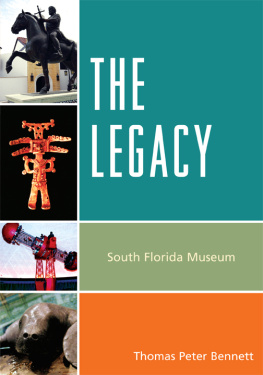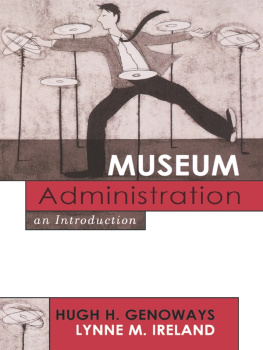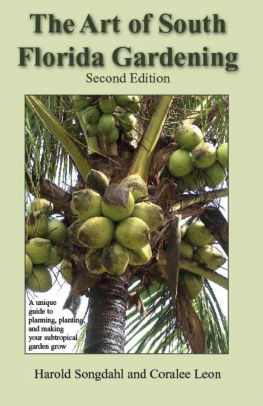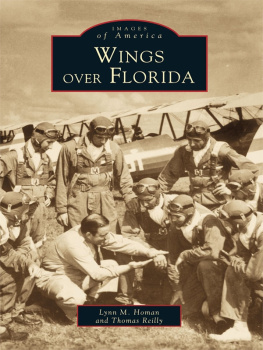The Legacy
South Florida Museum
Thomas Peter Bennett
University Press of America, Inc.
Lanham Boulder New York Toronto Plymouth, UK
Copyright 2011 by
University Press of America, Inc.
4501 Forbes Boulevard
Suite 200
Lanham, Maryland 20706
UPA Acquisitions Department (301) 459-3366
Estover Road
Plymouth PL6 7PY
United Kingdom
All rights reserved
Printed in the United States of America
British Library Cataloging in Publication Information Available
Library of Congress Control Number: 2010929436
ISBN: 978-0-7618-5261-2 (paperback : alk. paper)
eISBN: 978-0-7618-5262-9
.
` The paper used in this publication meets the minimum
requirements of American National Standard for Information
SciencesPermanence of Paper for Printed Library Materials,
ANSI/NISO Z39.48-1992.
Preface
The Legacy: South Florida Museum tells the story of a peoples museum that had its beginning in early twentieth-century Florida. The Legacy explores the interplay of archeology, culture, tourism, and economics that molded the times and development of a museum, not started by wealth, academia, or government, in a unique setting and with a unique ethos . The Legacy is the cultural chronicle of todays South Florida Museum and its facilities, including the Bishop Planetarium, Parker Manatee Aquarium, and Spanish Plaza.
The Legacy is a tale of volunteerism, the spirit of voluntary action for the common good. Dedicated individuals in the local professional and business community provided leadership, organization, and funding support for establishing the South Florida Museum. Most had settled in Manatee County, in so-called south Florida, from 1900 to 1941, to begin new lives. Citizensamateur historians, archeologists, biologists, and other interested individualsprovided collections, artwork, artifacts, and funding for the Museums growth. Local newspapers, particularly the Bradenton Herald, provided informational and editorial support.
Montague Tallant, a local archeology hobbyist, created through fieldwork the Museums renowned founding archeological collections. A civic-minded local physician, Dr. William D. Sugg, who arrived in 1930 as Bradentons first resident surgeon, led the peoples efforts in founding the Museum in 1946 and its further expansion through the 1970s. A very private and generous couple, Edward and Lillian Bishop, provided help and major financial support to establish the Bishop Planetarium. Other citizens, including local, state, and national leaders in many fields, gave ancillary support. Many volunteers and a few paid staff created the exhibits and programs into the early 1980s. Citizen volunteers continue to play key roles in the Museums governance and operations.
The Museums story is linked to Floridas tourism, archeological and environmental issues, and its new ventures. I have tried to represent the historical, scientific, and cultural influences that led to the founding and growth of the Museum in an accurate and impartial manner. I extensively quoted many voices over time, from newspaper, magazine, and scholarly accounts, to convey the cultural and historical context of the origins and development of the Museum.
Where it seemed appropriate, I provided historical background for events related to archeology, space, and endangered manatees that influenced the Museums exhibition and education programs and led to the development of the Bishop Planetarium and Parker Manatee Aquarium.
For example, much is said about the Spanish exploration of Florida during the sixteenth century because of the multiple impacts on the Museum. The Museums founding archeological collection contains Spanish artifacts. The designated landing site of Hernando De Soto in 1539 and the establishment of the De Soto National Memorial near Bradenton in 1939 called attention to the artifacts and archeological work of Montague Tallant. The post-Depression burst of tourism in Florida spurred an annual De Soto celebration in Bradenton. This event gave impetus and publicity to the establishment in 1941 of Tallants Manatee County Museum, a precursor to the founding of the South Florida Museum in 1946. A baby manatee, brought to Bradenton in 1949 for an annual De Soto celebration, later acquired a home aquarium at the fledgling Museum. Baby Snoots grew and became Snooty, the Museums celebrity resident of the Parker Manatee Aquarium. The continuing De Soto influence on the Museums exhibits became more pronounced when the Museum moved to its new permanent home in 1966. Dr. Sugg subsequently acquired many Spanish artifacts for exhibits and provided leadership for building the Museums Spanish Plaza, which was dedicated in 1980.
Space exploration, coupled with the national need for enhanced science education, prompted a new direction when the Museum moved to a permanent home and new facilities in 1966. The building of the Bishop Planetarium, which Mrs. Lillian Bishop generously funded in memory of her husband, expanded the Museums mission. With Tallants collection, other artifacts, Snootys aquarium, and the Bishop Planetarium, the Museums scope extended From Stone Age to Space Age.
Twenty years later, a renewal of the Museums programs and facilities began under the volunteer leadership of Daniel S. Blalock, Jr., president of the Museums board. As a board member and patron, Mary Parker helped create the Aquarium that bears her name and generously supports the Museum. The Parker Manatee Aquarium, completed in 1993, provided a new home for the venerable Snooty and facilities for rescued manatees requiring rehabilitation. The renovation of the Museums facilities, exhibits, and educational programs continued, with an interruption in 2001 when a fire destroyed the planetarium and adjacent facilities. However, the revitalization resumed, resulting in a new South Florida Museum with comprehensive exhibits about Floridas Waterways, Natureways and Lifeways, the Tallant Gallery, Discovery Place, Parker Manatee Aquarium, and Spanish Plaza. The epilogue to the story of the fire-destroyed planetarium is an entirely new Bishop Planetarium with wide-ranging programming.
The Legacy is the story of many peoples efforts and the cultural and natural history events that created todays South Florida Museum. I hope that this book contributes to explaining and strengthening this legacy, and that of the Museum. I hope the reader will visit the Museum, see, and participate in the story of The Legacy: South Florida Museum.
Thomas Peter Bennett
Bradenton, Florida
January 2010
Acknowledgments
The spark for this book was Dan Blalock, Jr., president of the South Florida Museum from 1987 until 2002. Ignition occurred when Dan, who often floated the need for a history of the South Florida Museum to willing listeners, bent my ear during one of our luncheon conversations. It was about a year after I had retired as executive director of the Museum and was continuing to do volunteer work with the curatorial staff. Dan shared with me tape recordings that he had made of conversations with several board members about their memories of the early Museum. Later, I listened to the tapes, made notes, and, became intrigued with the story of an early museum in early Florida. I drafted an outline based on further conversations with Dan and others associated with the Museum. Several outlines later, I began to work on this project. Dan and others continued to provide thoughtful and critical comments as the book chugged along.
The books concept and title, in retrospect, originated in A Message from the Executive Director that I wrote in 1999 for the Museums membership publication, Navigator :
The Legacy began with the founding of the Museum in 1946 by Bradenton citizens, under the leadership of Dr. W.D. Sugg. The Legacy was in the cultural and natural history of Manatee County and Floridas Gulf Coast. The Tallant Collection of archaeological artifacts and the Eagles Nest are prime examples. In 1949, Baby Snoots became part of the Legacy at the Museums Bradenton Pier site. The Legacy expanded to include space, the Bishop Planetarium and Observatory in 1966. The 1980s included the Spanish Courtyard, De Soto House, Chapel, and De Soto statue and fountain. In 1993, Snootys new home, the Parker Manatee Aquarium, became the most recent structure allowing the Legacy to continue its growth... The upcoming effort of fundraising, construction, and renovation, with minimal disruption, will be a renewal process: Strengthening the Legacy.








